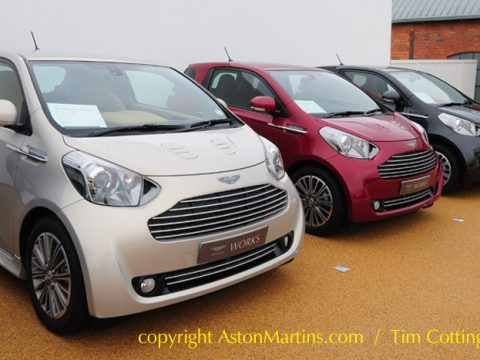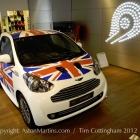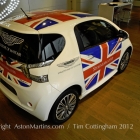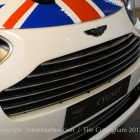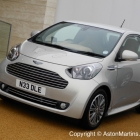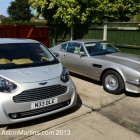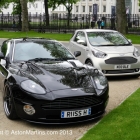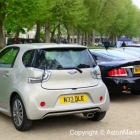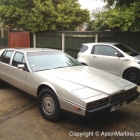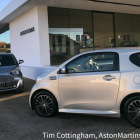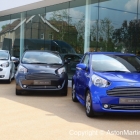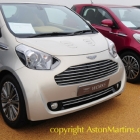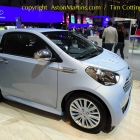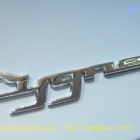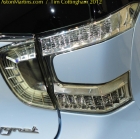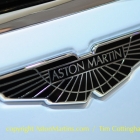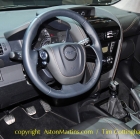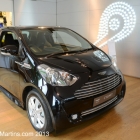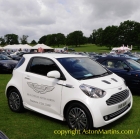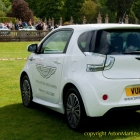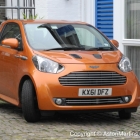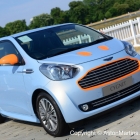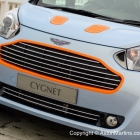The Cygnet was powered by a 4 cylinder 1.33 litre front mounted engine with peak power of 97 bhp. Incredible that the tiny car actually had usable rear seats although it is described as a 3+1 whereby only one of the rear seats actually has any legroom. Carrying additional rear seat passengers limits greatly the luggage that can be carried and the extra weight of passengers does blunt performance somewhat. Actually relative performance (relative to other city cars) was quite impressive. The Cygnet could reach 106mph and 0-62 mph in 11.8 and 11.6 seconds (manual and CVT respectively). But supercar performance matters little in the city where the ability to nip through small gaps in the traffic and park in spaces that bigger cars drive past is paramount. The Cygnet is the smallest AM ever at just 3078mm long and 1680mm wide. The other performance parameter where the Cygnet excelled was emissions. When fitted with with optional CVT auto transmission, the car emitted only 120g/km of CO2, the six speed manual only 116. Every Cygnet sold helped to significantly lower the fleet vehicle CO2 emissions for AML and thus counter the European legislation foisting almost draconian cuts from each and every significant manufacturer. The other high end automotive brands are part of huge corporations with wide model ranges to share the burden of overall target reduction. Independent Aston Martin could not do this and this was another reason for the existence of the Cygnet. At one point, it was intended that the Cygnet would only be offered only to existing AM owners although this restriction was dropped long before the car reached the marketplace.
Following two years of production, it became apparent that demand for the manual Cygnet was somewhat behind the CVT version. Thus from February 2013, right hand drive cars with manual transmission were discontinued. Left hand drive cars with the manual box were also discontinued shortly after. Sadly, the Cygnet did not appeal to sufficient customers and by September 2013, the car was quietly dropped from the range with no plans for a replacement. Although Dr Bez, Aston Martin CEO would have liked to have seen electric Cygnets running around London during the Olympics in 2012, and also would have liked a supercharged version, neither plans came to fruition.
All but one production Cygent was built to ‘High Line’ specification. One single ‘Low Line’ was built to a lower specification and intended to be sold at a lower price point. For reasons unknown to me, this less expensive Cygnet was never brought to market.
All this makes the Cygnet quite a rare car………..a certain future classic… …collectable………..a cult car even. Without a doubt I would have to agree.



